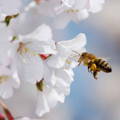
Choosing Honeybees: The Pros and Cons of 5 Popular Honeybee Varieties
Honeybees, those tiny wonders of nature, play an essential role in pollination and honey production. Yet, not all honeybees are created equal. Various honeybee varieties exist, each with its own unique traits and characteristics. Understanding the differences between these varieties is crucial for beekeepers looking to establish a thriving apiary.
FUN FACT: The practice of beekeeping dates back at least 4,500 years. 🐝
Subscribe
To join our mailing list and never miss an update!
Explore the pros and cons of five common honeybee varieties: the Italian honeybee, the Carniolan honeybee, the Russian honeybee, the Buckfast honeybee, and the Sascatraz honeybee to gain a better understanding of which bee is the best fit for your specific beekeeping goals.

THE IMPORTANCE OF UNDERSTANDING DIFFERENT TYPES OF HONEYBEES
Before diving into the specific honeybee varieties, it's essential to highlight the significance of understanding these differences. The choice of honeybee variety can significantly impact your apiary's performance and resilience.
Factors such as temperament, productivity, disease resistance, and climate suitability can all vary between bee breeds. Selecting the right honeybee variety can mean the difference between a thriving bee colony and one that struggles to survive.
1. italian honeybee
The history of the Italian honeybee, also known as Apis mellifera ligustica, is a story that spans centuries. These honeybees originated in the Apennine Peninsula in Italy, which is known for its rich tradition of beekeeping. Their journey to international prominence began in the mid-19th century when Italian honeybee colonies were imported to the United States.
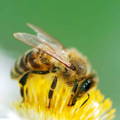
Beekeepers were drawn to the Italian honeybee for its gentle temperament, prolific honey production, and beautiful golden appearance. These bees quickly became popular among apiarists, and their influence extended worldwide.
italian PROS:
• Productivity: Italian honeybees are renowned for their impressive honey production. They're diligent foragers and can gather nectar and pollen in abundance.
• Gentle Behavior: Italian honeybees are generally known for their gentle and calm temperament, making them a suitable choice for beginners and those seeking a less aggressive bee variety.
italian CONS:
• Sensitivity to Cold: Italian honeybees may struggle in colder climates, as they have a reduced ability to withstand low temperatures.
• Susceptibility to Disease: They can be more prone to certain diseases like nosema and varroa mites, which can pose challenges for beekeepers.
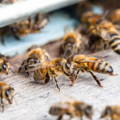
2. CARNIOLAN HONEYBEE
The Carniolan honeybee, scientifically known as Apis mellifera carnica, has a long and storied history that dates back to the mountainous regions of the Carniola region, which is now a part of Slovenia. These bees have been kept for centuries in Central Europe, primarily due to their docile nature and strong adaptability to varying environmental conditions.
The Carniolan honeybee began to gain international recognition in the mid-20th century when beekeepers around the world became increasingly interested in their unique qualities. Today, Carniolan honeybees are renowned for their excellent brood-rearing abilities and adaptability to various climates, making them a preferred choice for beekeepers who operate in regions with fluctuating weather patterns.
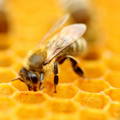
carniolan PROS:
• Adaptability: Carniolan honeybees are known for their adaptability to various climates, making them suitable for regions with unpredictable weather.
• Excellent Brood Rearing: They exhibit a strong tendency to rear brood, which can lead to a robust colony population.
CARNIOLAN CONS:
• Swarming Tendency: Carniolan honeybees have a higher likelihood of swarming, which can lead to the loss of a significant portion of your bee colony.
• Aggressiveness: They can be more defensive than other varieties, which may not be ideal for beekeepers who prefer a calmer hive.
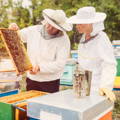
3. RUSSIAN HONEYBEE
The history of the Russian honeybee, also known as Apis mellifera ligustica, is a relatively recent development in the world of beekeeping. These honeybees were not initially native to Russia but were introduced to the country in the late 1990s through a collaborative effort between Russian beekeepers and the U.S. Department of Agriculture (USDA).
The aim was to create a honeybee breed with enhanced resistance to the devastating varroa mite, which had been causing significant challenges for beekeepers. Russian honeybees were specifically bred for their ability to groom and remove varroa mites from their bodies, thus reducing the impact of this destructive pest on the colonies.
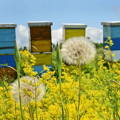
Over time, Russian honeybees gained popularity in North America and other regions for their resilience against varroa mites and their adaptability to colder climates. Their history is a testament to the ongoing efforts in beekeeping to develop honeybee breeds that can thrive in the face of modern challenges.
russian PROS:
• Disease Resistance: Russian honeybees have a natural resistance to some diseases and pests, which can reduce the need for chemical treatments.
• Cold Tolerance: They can endure colder temperatures, making them suitable for northern regions.
russian CONS:
• Reduced Honey Production: Russian honeybees tend to produce less honey compared to some other varieties.
• Inconsistent Behavior: Their behavior can vary, and they may exhibit increased aggression during certain periods.
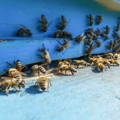
Trending Articles
4. BUCKFAST HONEYBEE
This hybrid bee combined the strengths of different bee strains, such as the Italian, Carniolan, and Caucasian bees, to achieve characteristics like disease resistance, vigor, and high honey production. Brother Adam's remarkable work revolutionized beekeeping in the UK and beyond, and the Buckfast honeybee remains a popular and enduring choice for beekeepers who appreciate its hardiness and productivity.
buckfast PROS:
• Hybrid Vigor: Buckfast honeybees are a hybrid variety created by Brother Adam, known for their vigor, resistance to disease, and good honey production.
• Gentle Nature: They are generally considered gentle and easy to work with.
buckfast CONS:
• Cost: Acquiring purebred Buckfast queens can be more expensive than other varieties.
• Availability: Buckfast honeybees may not be readily available in all regions, which can be a limitation for some beekeepers.
5. SASKATRAZ HONEYBEE
Saskatraz honeybees are a relatively recent addition to the world of beekeeping, with their history dating back to the early 21st century. This unique honeybee variety was developed through a collaborative breeding program between the USDA's Agricultural Research Service and Purdue University in Indiana.
The program aimed to create a honeybee breed with strong resistance to pests and diseases, particularly the destructive varroa mite. The breeding process involved selecting and crossbreeding bees with superior traits for disease resistance, gentleness, and honey production.
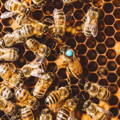
The resulting Saskatraz honeybee exhibits exceptional resistance to varroa mites, making them highly attractive to beekeepers who prioritize the health and well-being of their colonies. This relatively recent history of the Saskatraz honeybee showcases the ongoing efforts in the field of beekeeping to create robust and sustainable bee varieties.
saskatraz PROS:
• Disease Resistance: Saskatraz honeybees exhibit notable resistance to diseases, particularly varroa mites.
• Temperament: They are known for being relatively calm and easy to manage.
saskatraz CONS:
• Limited Availability: Finding Saskatraz queens or colonies may be challenging in certain areas.
• Foraging Behavior: They might have specific foraging behaviors that could affect their honey production in some environments. Supplemental feeding may be necessary.
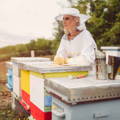
CHOOSING THE RIGHT HONEYBEE FOR YOUR APIARY
Selecting the right honeybee variety for your apiary is a crucial decision that requires careful consideration. Before making a choice, assess your specific goals, local climate, and your experience level as a beekeeper. It's also beneficial to consult with local beekeeping associations and experienced beekeepers in your area to gather valuable insights and advice.
At Gypsy Shoals Farm, we run Sascatraz and Italian honeybee hives. In our experience, the Sascatraz are rock stars over the Italian variety in honey production, temperment and disease resistance. However, they are not always available to purchase online when we need to requeen a hive. Italian honeybees are the most common available online for shipping in the United States. They are a fine breed of bee with just a fiestier temperment.
In conclusion, each honeybee variety comes with its own set of advantages and disadvantages. When choosing a honeybee variety for your apiary, it's essential to weigh these pros and cons against your unique needs and circumstances.
Whether you prioritize honey production, disease resistance, adaptability to your climate, or docile behavior, there's likely a honeybee variety that suits your beekeeping goals. By making an informed choice, you'll be well on your way to establishing a thriving and productive bee colony in your apiary.
Trending Products
Copyright©2023 All rights reserved. We love to have you share our article as long as you include a direct link to this page. This article or any portion thereof , including all images, may not be reproduced or used in any manner whatsoever without the express written permission of Gypsy Shoals Farm.



